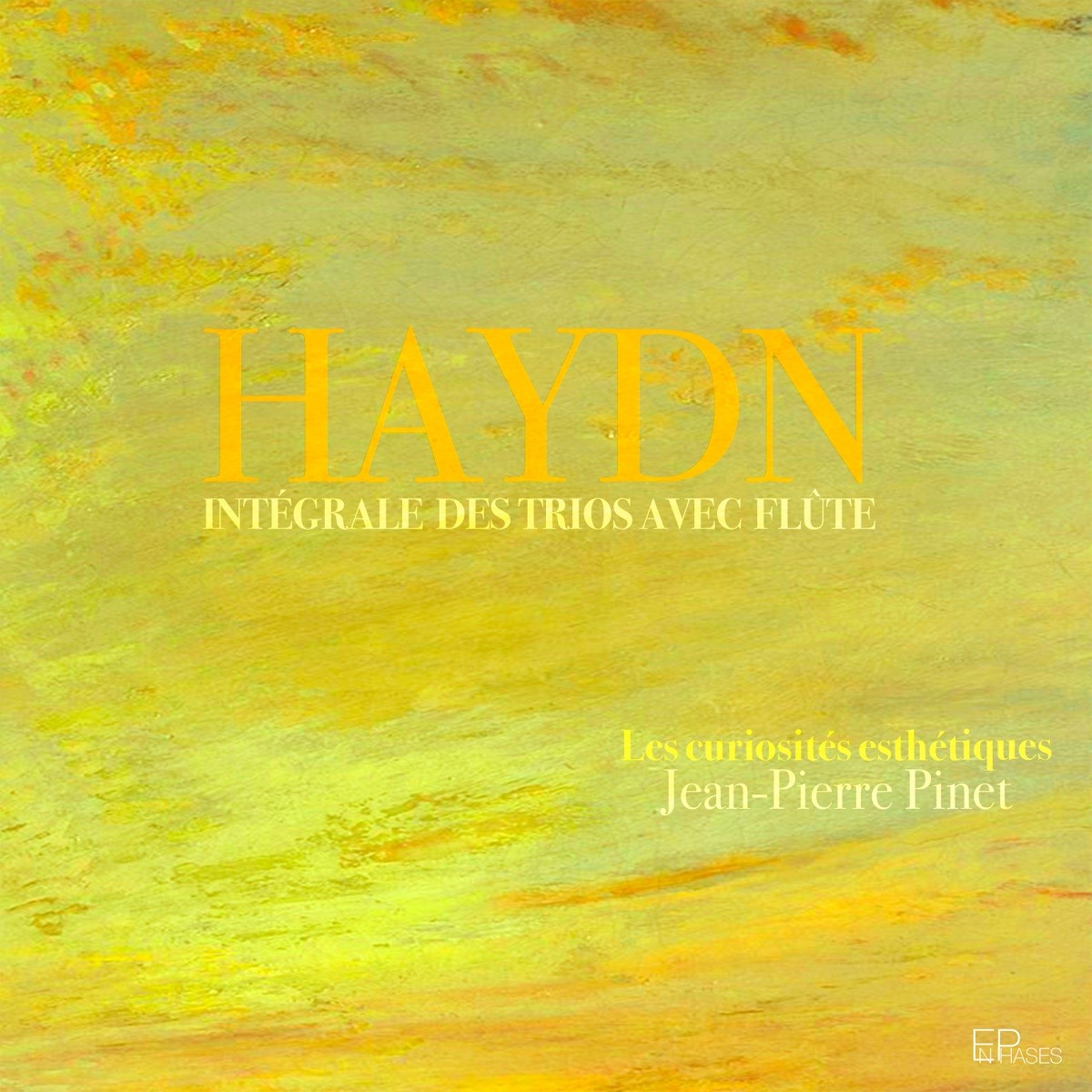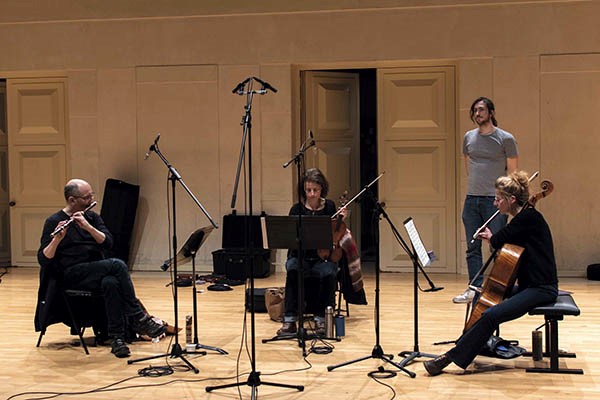HAYDN Intégrale des Trio avec flûte

HAYDN
Intégrale des Trio avec flûte
Les curiosités esthétiques
Jean-Pierre Pinet, transverse flute
Valérie Balssa, flute
Cyrielle Eberhardt, violin
Cécile Verolles, cello
Étienne Mangot, cello
Aline Zylberajch, fortepiano
RECORDINGS
Divertimenti opus 38
Direction artistique : Gabriel Grosbard
Prise de son : Adrien Pinet
Arsenal de Metz, 14, 15 & 16 avril 2022
Trios avec pianoforte Hob. XV : 15-17
Direction artistique : Laure Morabito
Prise de son : Jean-Michel Robert
Arsenal de Metz, 23, 24 & 25 octobre 2014
London Trios
Direction artistique : Gabriel Grosbard
Prise de son : Adrien Pinet
Arsenal de Metz, 17 & 18 avril 2022
Baryton Trios arr. Hob. XI : 82, 100, 103, 109, 110, 118
Direction artistique : Gabriel Grosbard
Prise de son : Adrien Pinet
Arsenal de Metz, 5, 6 & 7 mai 2021

Rightly dubbed the ‘Father of the Symphony’, Joseph Haydn is also an undisputed master of chamber music. The string quartets alone are a monument to the history of music. Among the trios, also major works, the nineteen with flute, though undoubtedly more modest, nevertheless constitute an inestimable corpus of finesse, intelligence and suavity.
ABOUT US
More than two hundred years after his death, Joseph Haydn remains an inexhaustibly modern figure, so much so that many of today's composers still lay claim to his legacy, as if they had been close to him and had retained from their reading of his work a discourse that was at once sober and sensitive, never complacent, sincere, fervent, always respectful of the very life of forms, a witness to and actor in their plasticity.
As early as 1782, Joseph Haydn was planning to travel to London, but in the end he was unable to do so. His music therefore preceded him. By 1794, when he moved to London, he was already a famous and eagerly awaited figure. The vast majority of his chamber music featured the violin in the upper parts. It might therefore seem surprising that, once he had established himself across the Channel, he so often called on the flute in his compositions for small ensembles. This was something he had rarely done before, although the instrument enjoyed a certain predilection in Austria, although less so than in Germany or France.
Many of the works in this boxed set testify to the new interest in the wind instrument of a composer best known as one of the absolute masters of the string quartet. These trios were either originally conceived or transcribed in his own hand, or were published in this way for the first time in England. Could he have intended this choice to honour the particular taste shown for this instrument by London's aristocratic milieu? This hypothesis is highly admissible: the transverse flute, in fact, before the great changes in its construction pushed it out of the catalogues of most of the great composers, had ardent followers, including King Frederick II, himself a remarkable flautist?
And while the difficulty of performance and the originality of the language of these trios may have baffled some performers of the time, they delighted instrumentalists (and composers) justly renowned for their virtuosity, such as the violinist Gaviniès in France and the flutist Tromlitz and the violinist Stamitz in Germany.
It seems, however, that Haydn's early chamber works, whether for strings or winds, were not very favourably received by the ‘gentlemen’ of the Prussian court, whose old-fashioned tastes did not encourage them to make the effort to listen that was necessary to understand the new discourse he was proposing:
"In the chamber style, I have had the good fortune to please almost all nations with the exception of the Berliners, as the newspapers and letters that have reached me show. I am simply astonished at the inability of these gentlemen from Berlin, who are usually so reasonable, to criticise my music in balanced terms: they praise me in one weekly, only to drag me down in another, and all this without ever saying why. I know very well why: because they are incapable of playing some of my works, and too vain to take the trouble to study them properly, as well as for other reasons which, with God's help, I will answer in due course.
Jean-Pierre Pinet
Les curiosités esthétiques
When you are concerned with promoting an ancient heritage - be it literary, philosophical or musical - you are immediately confronted with what might be called ‘the obligation of choice’: the past is the indistinct memory of human experience... Some of it, although it enjoyed undisputed legitimacy in its time, does not deserve to be highlighted or revisited... Some of them, although they enjoyed indisputable legitimacy in their time, do not deserve to be highlighted or revisited... Others, on the other hand, have flourished, constituting with the slowness of important things an inestimable heritage whose power and greatness we recognise, and for some of them we also taste the particular flavour, the strange, the ‘unheard of’.
It is to one of these adventures that Les curiosités esthétiques is destined... With its ‘variable geometry’, it draws its roots from the Europe of the Enlightenment, the time of Voltaire, Mozart and Frederick the Great, the sons of Bach, Haydn and the young Beethoven, to revive forgotten scores and discover new ones, tracking down the beginnings of a modernity in the construction of a chord or an orchestral colour that still nourishes our contemporaries, and questioning in another way that famous notion of ‘authenticity’, beautiful and artificial at the same time, full of respect and also of illusions...
Share on your networks!
Follow us on the networks!

